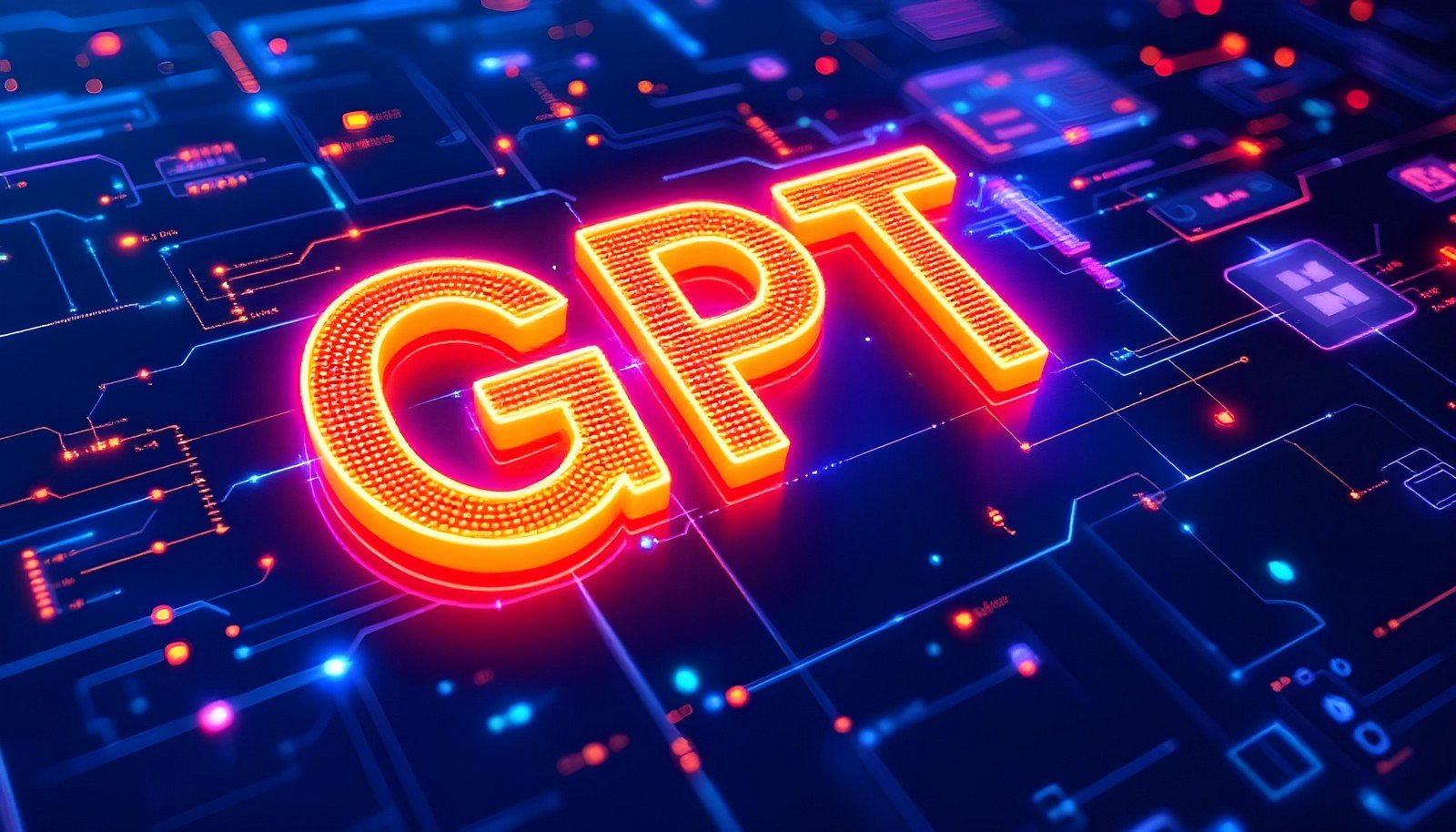Generative Pretrained Transformer (GPT)

Quick Navigation:
- Generative Pretrained Transformer (GPT)
- Generative Pretrained Transformer Explained Easy
- Generative Pretrained Transformer Origin
- Generative Pretrained Transformer Etymology
- Generative Pretrained Transformer Usage Trends
- Generative Pretrained Transformer Usage
- Generative Pretrained Transformer Examples in Context
- Generative Pretrained Transformer FAQ
- Generative Pretrained Transformer Related Words
Generative Pretrained Transformer (GPT)
Generative Pretrained Transformer (GPT) is a type of artificial intelligence (AI) model designed for natural language processing tasks. It uses deep learning techniques, specifically a type of neural network known as a transformer, to generate human-like text based on input data. GPT models are trained on vast amounts of text data and learn to predict the next word in a sentence, which allows them to produce coherent and contextually relevant responses. The "pretrained" aspect refers to the initial training phase on a large dataset before fine-tuning for specific tasks. This combination of pretraining and transformer architecture enables high performance in generating natural language text.
Generative Pretrained Transformer Explained Easy
Imagine a super-smart robot that can read and write stories, answer questions, or even chat with you like a friend. This robot has read millions of books and articles, so it knows a lot of words and how to put them together to make sense. It’s called a Generative Pretrained Transformer because it can create (or generate) new sentences, and it’s already learned a ton (pretrained) before talking to you. The transformer part is like its brain, helping it remember what it read and how to write like a real person.
Generative Pretrained Transformer Origin
The concept of using transformer models for natural language processing emerged from groundbreaking research in the field of deep learning and AI. GPT was first introduced by OpenAI in 2018, building on the revolutionary transformer architecture proposed by Vaswani et al. in 2017. The first version, GPT-1, laid the foundation for understanding the potential of generative models, while subsequent versions, including GPT-2 and GPT-3, significantly advanced the capabilities of generating human-like text and understanding complex linguistic patterns.
Generative Pretrained Transformer Etymology
The word “Generative” comes from the Latin word “generāre”, meaning “to produce” or “to create”. “Pretrained” combines “pre-” (before) with “train”, referring to the initial phase of learning. “Transformer” is derived from the Latin “trans” (across) and “formare” (to form or shape), indicating a structure capable of transforming input data into meaningful outputs.
Generative Pretrained Transformer Usage Trends
Since its introduction, the Generative Pretrained Transformer has seen widespread adoption in various industries, from customer service chatbots and virtual assistants to content creation tools and coding assistants. The growth of GPT models reflects an increasing demand for AI-driven automation and user engagement tools that can simulate human conversation. Developers and researchers have also leveraged GPT for creative applications, including storytelling and idea generation. The trend shows continued expansion into sectors like healthcare for diagnostic support and education for personalized learning aids.
Generative Pretrained Transformer Usage
Formal/Technical Tagging:
- Artificial Intelligence
- Machine Learning
- Natural Language Processing
- Neural Networks
Typical Collocations:
- Train a Generative Pretrained Transformer
- Use GPT models
- Pretrained neural network
- Transformer-based language model
- Generate text using GPT
Generative Pretrained Transformer Examples in Context
- “The customer service team implemented a Generative Pretrained Transformer to enhance their chatbot’s ability to respond to queries more naturally.”
- “Writers often use Generative Pretrained Transformers for brainstorming ideas and drafting initial versions of articles.”
- “With recent advancements, GPT has been employed in coding platforms to assist developers by generating code snippets on demand.”
- “Researchers tested a new algorithm by integrating it with an existing Generative Pretrained Transformer for improved text summarization.”
Generative Pretrained Transformer FAQ
What is a Generative Pretrained Transformer?
A model that generates text using a neural network architecture called a transformer, pretrained on large datasets.
What does ‘pretrained’ mean in GPT?
It means the model has been initially trained on extensive text data before being fine-tuned for specific tasks.
What are the main uses of GPT?
It’s used for chatbots, text generation, language translation, and coding assistance, among other applications.
Who developed the Generative Pretrained Transformer?
OpenAI developed the original GPT models.
What makes GPT different from other AI models?
It uses transformer architecture for better handling of long-term dependencies and context in text.
Can GPT understand any language?
While it’s mainly trained in English, it can understand and generate text in various languages to a certain extent.
Is GPT free to use?
Some versions have free access, but advanced models may require paid subscriptions or API usage fees.
What is the latest version of GPT?
The latest versions and capabilities can be checked on OpenAI’s website.
How does GPT learn to generate text?
It learns by predicting the next word in a sentence during training on large datasets.
Can GPT create original content?
Yes, it can generate original text based on the prompts provided.
Generative Pretrained Transformer Related Words
Categories/Topics:
- Machine Learning
- Deep Learning
- AI-based Automation
Word Families:
- Generation
- Pretraining
- Transformation
Did you know?
Did you know that GPT-2’s release was initially delayed by OpenAI due to concerns about potential misuse? The model’s ability to generate convincing and coherent text raised ethical and safety questions, showcasing how powerful AI technology can be both exciting and challenging to manage.
PicDictionary.com is an online dictionary in pictures. If you have questions or suggestions, please reach out to us on WhatsApp or Twitter.Authors | Arjun Vishnu | @ArjunAndVishnu

I am Vishnu. I like AI, Linux, Single Board Computers, and Cloud Computing. I create the web & video content, and I also write for popular websites.
My younger brother, Arjun handles image & video editing. Together, we run a YouTube Channel that's focused on reviewing gadgets and explaining technology.



Comments powered by CComment